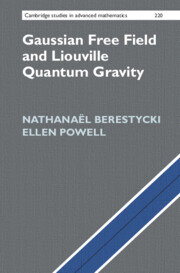Refine search
Actions for selected content:
3 results
4 - Statistical Physics on Random Planar Maps
-
- Book:
- Gaussian Free Field and Liouville Quantum Gravity
- Published online:
- 20 November 2025
- Print publication:
- 04 December 2025, pp 133-167
-
- Chapter
- Export citation
9 - Liouville Quantum Gravity as a Mating of Trees
-
- Book:
- Gaussian Free Field and Liouville Quantum Gravity
- Published online:
- 20 November 2025
- Print publication:
- 04 December 2025, pp 334-372
-
- Chapter
- Export citation

Gaussian Free Field and Liouville Quantum Gravity
-
- Published online:
- 20 November 2025
- Print publication:
- 04 December 2025
